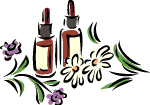
Q. We hear a lot lately about estrogen overload and the dangers of excess estrogen. Is too much estrogen bad?
A. It’s not a simple matter of having too much estrogen because estrogen isn’t one hormone. The term estrogen applies to three different hormones-—estrone, estradiol and estriol. In addition, there are estrogen-mimicking chemicals in the environment called xenoestrogens and estrogens found in food. So, it isn’t that women are producing too much estrogen, it’s that the natural balance of hormones is being disrupted through a variety of biological factors, including diet, lifestyle and environmental pollution.
Estrogen is not bad. You need “good” estrogens. Estrogen has 400 very important functions in the body and is needed for optimal health in men as well as women. It is the form of estrogen that you take which makes a difference in all of these functions.
Synthetic estrogens are not the same compounds as the estrogens your body makes. Synthetic estrogens, whether in the form of xenoestrogens or in the form of estrogen-like drugs, are not the same as the body’s natural estrogens. They don’t react properly with the estrogen receptors in the body. These synthetic estrogens are harder for the body to eliminate and can become toxic.
In proper balance, the good estrogens in the body are responsible for increasing metabolic rate, improving insulin sensitivity, supporting sexual interest, maintaining muscle development, bone density and collagen structure in the skin, and aiding mood, memory and concentration. Estrogens help create deep sleep patterns, sexual interest and fine motor skills. Proper estrogen balance also reduces the risk of cataracts, aids arterial health, decreases blood pressure, reduces risk of heart disease, decreases risk of colon cancer, helps prevent Alzheimer’s disease and even decreases the formation of wrinkles.
Besides the type of estrogen, the amount of natural estrogen you have is important. Too little or too much can cause symptoms or disease. That is why it is very important to do hormone monitoring if you are experiencing any symptoms of hormonally-related disease.
The most commonly prescribed form of estrogen is derived from the urine of pregnant mares, but there are better ways to supplement estrogen when it is needed. Many plants contain estrogenic compounds that mimic the body’s weaker estrogen, estriol. Estrogens from plants, known as phytoestrogens, are more similar to human estrogen than estrogen from horses. Phytoestrogens appear to have no cancer risk and may actually help to prevent cancer. These phytoestrogens exert low estrogenic effects, approximately 1/400th the potency of human endogenous estrogens. Herbs like black cohosh, dong quai, licorice, hops, kudzu and alfalfa all contain phytoestrogens. Black cohosh can balance estrogen if it is too low or too high. Phytoestrogens can also be found in soy, beans, whole grains and dark green leafy vegetables.
There are other ways to balance estrogen with supplements. A diet high in good fats is crucial to hormone health. Taking good fats like evening primrose oil or flax seed oil can help the adrenals produce more estrogen. Omega-3 essential fatty acids also help to balance the levels of good estrogens. In fact, good fats can increase estradiol production by 30%. Also, hormones will not be taken up properly by the cells or combusted effectively if there aren’t enough good fats in the diet. Low fat diets decrease free estrogen, the estrogen that is actually available for use by the body.
A lack of fiber in the diet will have an indirect effect on estrogen levels as well. Enough fiber in the diet will inhibit the reabsorption of estrogen. This can also happen with leaky gut syndrome.
Here are some other factors to consider in balancing estrogen levels. Stress suppresses estrogen function. A high protein, low glycemic index diet will help to balance estrogen. However, it is important to use meat that is free of hormones and antibiotics. Exercise is also very important for balancing hormones.
Hot flashes can be due to fluctuating levels of estrogen rather than a true decrease in estrogen. Estrogen dominance can result from the over production of estrogen or from an imbalance in the ratio of progesterone to estrogen. The symptoms of estrogen excess may be a result of the transformation of estrogens rather than the absolute amount of estrogen in the body.
Indole 3 Carbinol (I3C) helps with estrogen conversion. Studies have shown that I3C elevated the metabolism of estrogen by 50-75%. This substance is available by supplementation, but it is found naturally in cruciferous vegetables. However, if you overcook your veggies, it destroys the I3C. Antacids interfere with the absorption of I3C. Besides cruciferous veggies and I3C, kudzu, B6, B12 and folate are helpful in supporting proper estrogen combustion.
Hormone balance has to do with many factors. The thyroid and adrenals play a huge role in reproductive hormone health and need to be addressed with lifestyle and supplemental changes, as well. The adrenals will take over hormone production after natural or surgical menopause. The adrenals are also responsible for hormone transport. The thyroid is responsible for metabolizing hormones. Because of this, all hormone-balancing programs require thyroid and adrenal support.
Q. How do I tell what I need to do in order to balance my hormones?
A. Saliva hormone testing is an effective way of determining what your current hormone balance is. Most blood hormones (about 95%) are bound to specific proteins that carry them through your bloodstream and can be considered the hormone ‘storage’ fraction. The other 5% represents your free hormones - those available to move easily into your target organs and fulfill their functions. Your saliva contains these free hormones that can be easily measured to give an accurate picture of those hormones that are readily available to your tissue. The information you need to determine your hormone balance, is how much hormone is entering your tissues, so saliva testing is the best tool for measuring hormone balance.
Q. What about progesterone creams? Are they helpful in balancing estrogen levels?
A. When the ovaries produce progesterone and it enters the bloodstream, about 98% of it is tightly bound to proteins in the bloodstream, so it is not free to move into the tissues. In contrast, when hormones are delivered through the skin, a much higher percentage is bioavailable.
Hormones delivered through the skin don’t accumulate in the bloodstream because they are efficiently delivered to tissues. This is why a daily dose of 15 to 30 mg of progesterone cream results in a very small increase (if at all) on a blood test, but a significant increase in a saliva test.
The natural progesterone in progesterone creams is identical to the progesterone in the human body. It is not the same as the synthetic progestins that doctors commonly prescribe. Synthetic progestins produce side effects including breast cancer, facial hair growth, depression, cardiovascular disease, liver disorders and other problems.
This natural progesterone is made from a plant source. It was originally produced from the compound, diosgenin, originally isolated from the Mexican wild yam by Professor Russell Marker in the 1940’s. The Mexican wild yam was the source for the original birth-control pill. Mexican wild yam also contains dihydroepiandrosterone or DHEA, an adrenal hormone that decreases with age and in certain degenerative conditions including postmenopausal osteoporosis.
Although a balance of estrogen and progesterone is most beneficial, progesterone enhances receptor sensitivity to estrogen, so supplemental estrogen may not even be needed when progesterone is used. Loss of bone density is generally related to an age-dependent decrease in gonadal hormones. Osteoporosis at menopause may be due more to a lack of progesterone than estrogen. There is a greater decline in progesterone than in estrogen, and progesterone begins to decline earlier. While estrogen supplementation slows bone loss, progesterone creams can actually rebuild bone.
By using a transdermal cream formula, the natural progesterone is allowed to flow through the skin and go directly into the bloodstream, completely bypassing digestion. Since progesterone enhances receptor sensitivity to estrogen, women who are taking estrogen should reduce their estrogen dose in half when starting progesterone. Many will be able to eliminate or reduce estrogen further in the next several months.
Q. Do xenoestrogens affect men?
A. A small amount of estrogen is necessary in men to prevent bone loss and for sex drive. The fact that men have only a small amount of estrogen is also the reason hormone replacement is much safer for men. As a man ages, his testosterone declines allowing his body to accumulate fat particularly around the belly. Belly fat contains an enzyme called aromatase that converts testosterone to estrogen. The rise in estrogen and decrease in testosterone make the men feel bad.
Excess estrogen combined with DHT, the stronger form of testosterone, promotes BPH, otherwise known as a swollen prostate. Excess estrogen increases the rise of prostate cancer through the same process that occurs in a woman’s beast. It increases the potential for conversion of estrogen to 16-alpha hydroxyl estrone—a carcinogen.
Xenoestrogens contribute to the death of testicular tissue in men and boys, depression caused by testosterone suppression, premature aging, infertility and obesity. The link between xenoestrogens and obesity can readily be seen by the high rates of obesity in areas where there is high exposure to xenoestrogens (farms in the Midwest and the industrial deep South). So, men should also avoid xenoestrogens and take steps to balance their hormones. We’ll have more to say about this next month.

